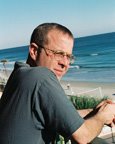When I decided to make my home in Florida, little did I know that my career would literally take a turn for the birds. I started out in New York as a scriptwriter and filmmaker. My career took me from New York to London and Paris and eventually back to New York. Florida is where I cast off the urban lifestyle and chose life as a wildlife photographer and conservationist. I have lived in four communities since moving here: Melbourne Beach, Mount Dora, Delray Beach, and Ponce Inlet (current). Perhaps my favorite is Melbourne Beach because it is the place where I reinvented myself, the irrepressible Phoenix.
Melbourne Beach is a patchwork of subdivisions and public lands strung like pearls along 20 miles of barrier island. Bounded by ocean to the east and the Indian River Lagoon to the west, this region is home to some of the most diverse habitats in the United States. Shorelines, wetlands, mangrove habitats, and maritime hammocks support a myriad of animal and plant species. This region is also home to a historically important bird rookery and the most productive loggerhead sea turtle nesting beaches in the Western Hemisphere. The Pelican Island and Archie Carr National Wildlife Refuges are virtually at my doorstep, and I consider myself fortunate to start out in this region of Florida.
My day begins before sunrise with breakfast at a local café. When the first light of day breaks over the treetops, I head towards my favorite birding trails. On any given morning, I am likely to find pelicans bobbing lazily in the lagoon. Brown pelicans are ubiquitous in Florida. The most patient of panhandlers, they loiter around boat docks and fishing piers. They strafe rooftops and shorelines. Clumsy and awkward on land, they are the most graceful of gliders. Pelicans have been described as “solemn,” “dignified,” “comical,” and “pompous” by various observers. With pouched bills pressed against breast, they appear to me like pterosaurs masquerading as English butlers.
Last year, I rescued a pelican entangled in monofilament. I bundled up the hapless bird for transport to a nearby ranger station. The pelican was incredibly light for its size – about the stature of a goose but weighing a mere 7 pounds.
Why Pelican Island is unique among rookeries has been a subject of conjecture. We do know that rookeries must be isolated from mainland predators for successful breeding to take place, and pelicans are known to be social birds that seek safety in numbers. Pelican Island is surrounded with abundant fisheries to support large bird colonies. Like sea turtles and other bird species, pelicans tend to return to their natal origins and “remain faithful to the old homeland of their ancestors,” (Herbert Keightley Job, 1905).
In winter, hundreds of pelicans, along with anhinga, wood storks, egrets, and herons of every variety cram themselves on Pelican Island to begin their courtship rituals. One might say pelicans separate into social classes with the upper crust preferring the treetops while the more down-to-earth birds make their nests on the ground. Newborn hatchings are altricial by nature, meaning they are blind, naked, and helpless at birth.
I return to my favorite birding trails again and again. The combinations of subject, lighting, and composition are infinite and ever changing, and it may be hours or days before I find the right shot. Photography removes all subjects from the continuity of space and time. An endangered species may appear abundant in the frozen moment of a photograph but is often elusive and hard to find. Out of context, a hard-won nature photograph fails to convey the grim reality that everywhere our precious wildlife heritage is under siege.
From atop an 18-foot observation tower, Pelican Island appears humble against a grey-blue expanse of Indian River Lagoon. Nevertheless, this place represents an important milestone as the birthplace of the American conservation movement and our National Wildlife Refuge System.
My journeys leave me breathless. The currents and eddies of my life seem improbable, yet they make sense even if I am the only one to remember or comprehend. So I start here - at an endpoint and a beginning.
Thursday
Subscribe to:
Post Comments (Atom)

1 comment:
Fascinating, Jeff. Thanks for directing me to your blog(s). What a treat -- and so many things to learn, things I've had no idea about.
Post a Comment